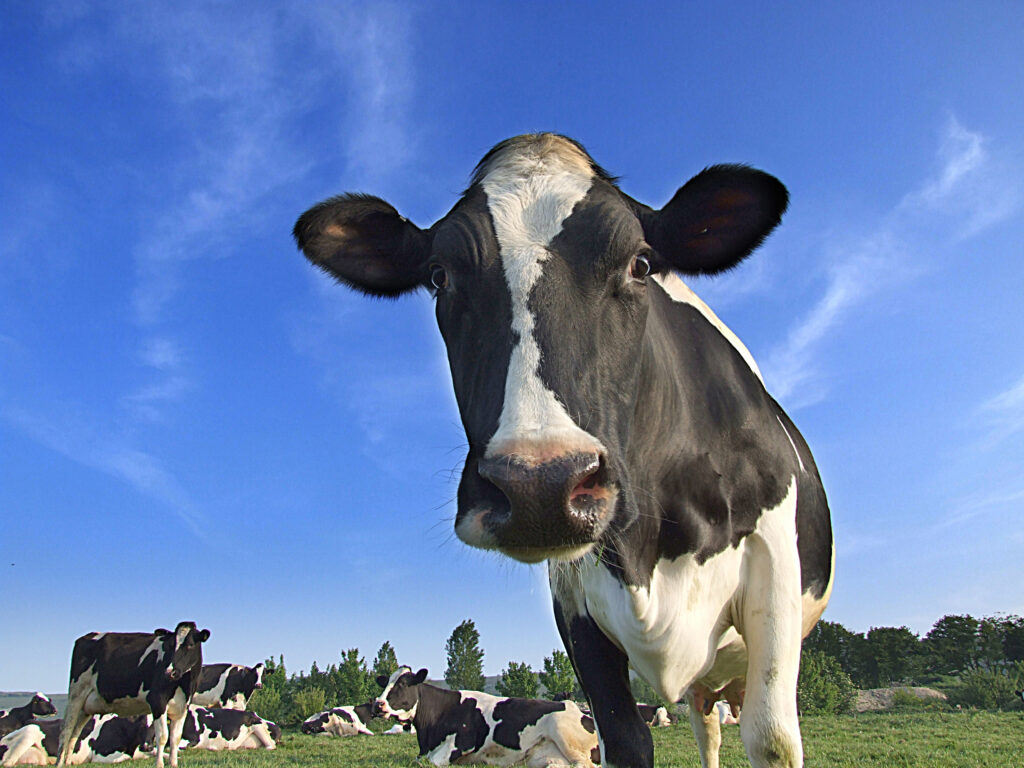Is the grass greener in a changing climate?
By Dr Orla Shortall, agricultural sociologist
Around this time of year, on a very rainy winter’s day a couple of years ago, I was visiting a dairy farm in east Scotland. Grazing was important to the farmers’ system for keeping his costs down, but he told me that, in recent years, more rain coming in unpredictable patterns was making it harder to rely on grazing as the driver of milk production on his farm. Instead, he was looking to keep the cows inside for longer and feed them more concentrate.
My visit was to interview him for a project called “Cows eat grass, don’t they?”, looking at the role of grass and grazing in dairy farms in the UK and Ireland.
Estimates suggest year-round housing is practiced on about 20% of UK dairy farms. Research has shown that the public prefer cows to graze rather than being housed year-round, because they see grazing as more natural and better for animal welfare. There are several grazing labels and certification schemes that market grass-based produce to consumers. Yet, key stakeholders I spoke to often saw these as potentially problematic, deepening a divide between farmers and the public over indoor dairy farming. My research was exploring farmers’ views about grazing and year-round housing practices.

The farmer I was visiting that wet day, like most I spoke to, was fine with indoor dairy farming. He thought animals could be just as well looked after indoors as out and, over a certain size of farm, it made sense to house the cows all year round for logistical reasons. This finding was reiterated in a survey I sent out to Scottish dairy farmers, with 83% of respondents agreeing that “Farmers’ stocking keeping skills are more important than the type of system [indoor or grazing] for welfare outcomes”. Though, in the same survey, a surprisingly high proportion of farmers, 67%, also agreed with a statement that cows should graze for part of the year. Given that farmers didn’t seem to object to indoor farming, like segments of the public do, what was behind this preference for grazing?

For the farmer I was visiting that day, as well as grass helping to keep costs down, the answer was that he liked grazing. He liked working outside and thought the cows liked it too. He said that at a certain time in spring the cows would collectively sense it was time to go out, crowd at the gate and “roar” if they thought he was about to open it. Others told me similar stories and how the ritual of letting the cows out in spring was an important part of their connection with the natural world and the changing seasons.
My work within the social sciences considers how factors like people’s values, experiences and beliefs can and should be factored into policy and wider debates. This project showed that farmers valued grazing, albeit, not necessarily for the same reasons as the public. Helping farmers adapt grazing practices in a changing climate is important, as is recognising overlap between what some farmers and consumers want, in an increasingly polarised agricultural landscape.
Many are pragmatic: grazing makes sense when the conditions are right, not on a dreich December day and not for all farms, but on a certain day in spring the cows would once again be itching to go out.
Disclaimer: The views expressed in this blog post are the views of the author(s), and not an official position of the institute or funder.
